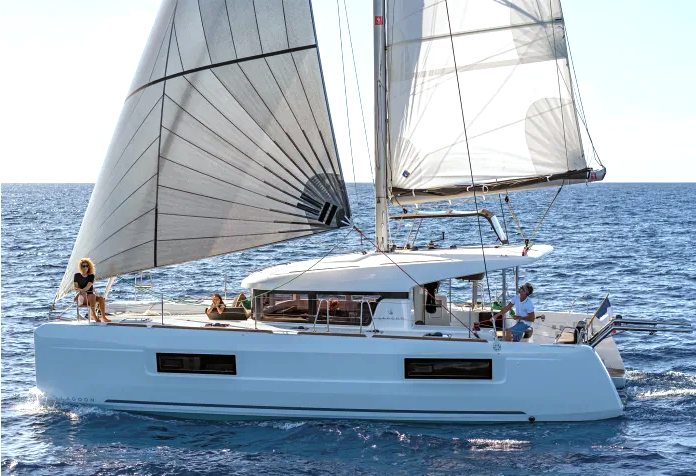
Evening Racing on the Oakland-Alameda Estuary
“Encinal Yacht Club had their first Spring Twilight Race on April 9,” writes photographer and EYC member Fred Fago. It was a cool evening for racing, with a steady breeze. “There was a lot of close racing as you can see in the photos.”
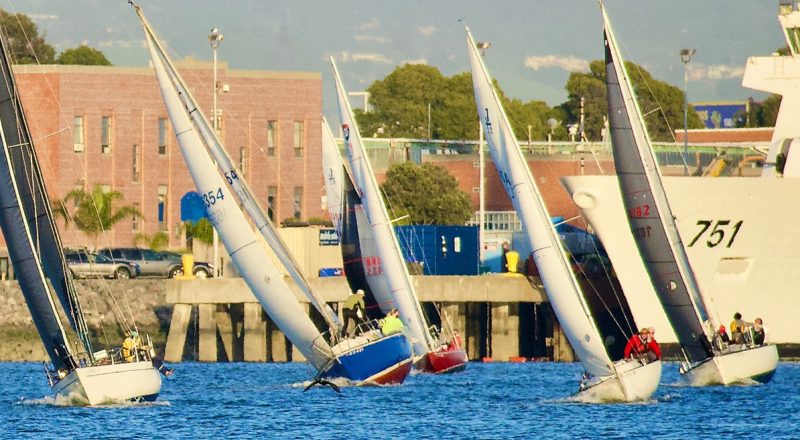
The Twilight Series offers a one-design non-spinnaker division for Express 37s, plus three spinnaker and one non-spinnaker PHRF divisions. The non-spinnaker option makes it easier to take along little kids and non-sailor guests safely.
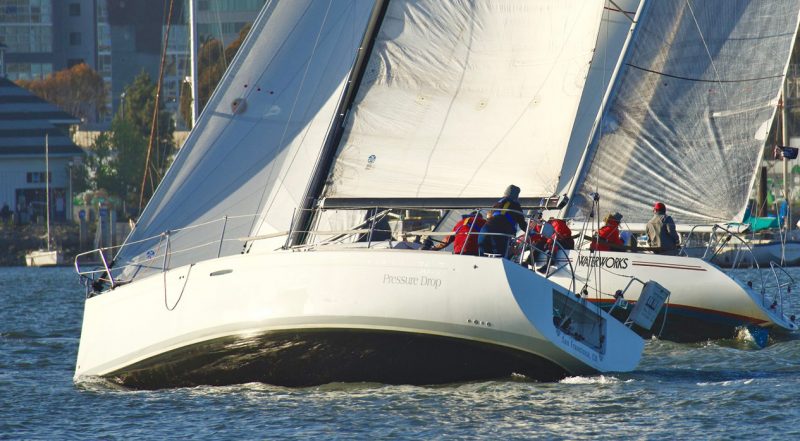
EYC’s series alternates Fridays with Island YC’s Island Nights, which kicks off this very evening.
But Fridays aren’t the only option for Estuary weeknight racing. Oakland YC offers Wednesday night races. Their Sweet 16 Series will begin on April 28 and sail every Wednesday night through June 16. They’ll take a summer vacation before resuming on July 7.
All three clubs are based in Alameda, though IYC is currently homeless. Their clubhouse in Alameda Marina fell victim to a big redevelopment project. EYC and OYC are neighbors in Pacific Marina, bordering on the southeastern edge of Marina Village.
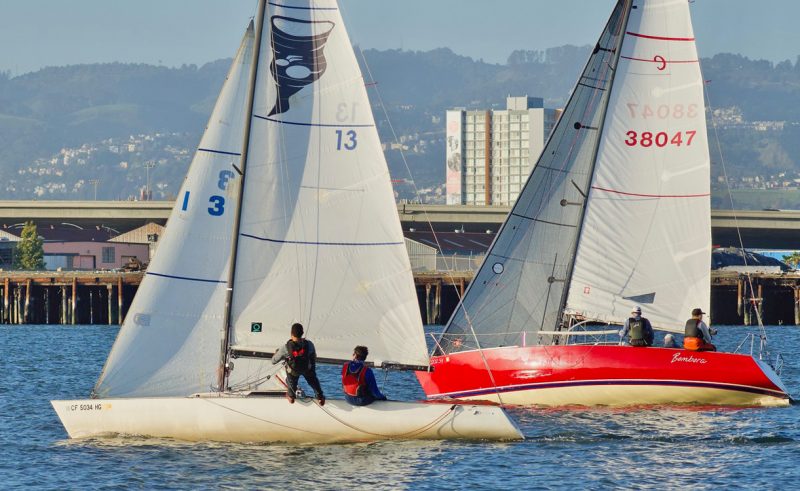
If you’re new to Estuary racing, or just feel like maybe your competitors might know something you don’t, you might want to tune in to Island YC’s virtual Estuary Race Clinic on Monday, April 19, 7:15-8 p.m. Topics will include an overview of what makes sailing the Alameda Estuary unique, and how locals use the wind and currents to sail efficiently. A brief skipper’s meeting for IYC’s Sadie Hawkins Race for women skippers will precede the clinic at 7 p.m. The Sadie Hawkins itself will sail on Saturday, April 24.
For our own perspective on Estuary beer can racing, see the August 2015 issue of Latitude 38. For more beer can race series around Northern California, see our Calendar and click on the ‘Beer Can Series’ tab.
Cleaning Up the Bay with the Help of a Little LADI
Bay Area musician Scott Chowning is on a mission to clean up the Bay, and his current goal is to collect one ton of trash in 2021.
“I’ve always been passionate about the natural world and how we humans are negatively affecting it,” Scott said. “When we face the fact that 8.3 million tons of plastic alone are discarded into our oceans every year, it’s easy to feel pretty helpless.”
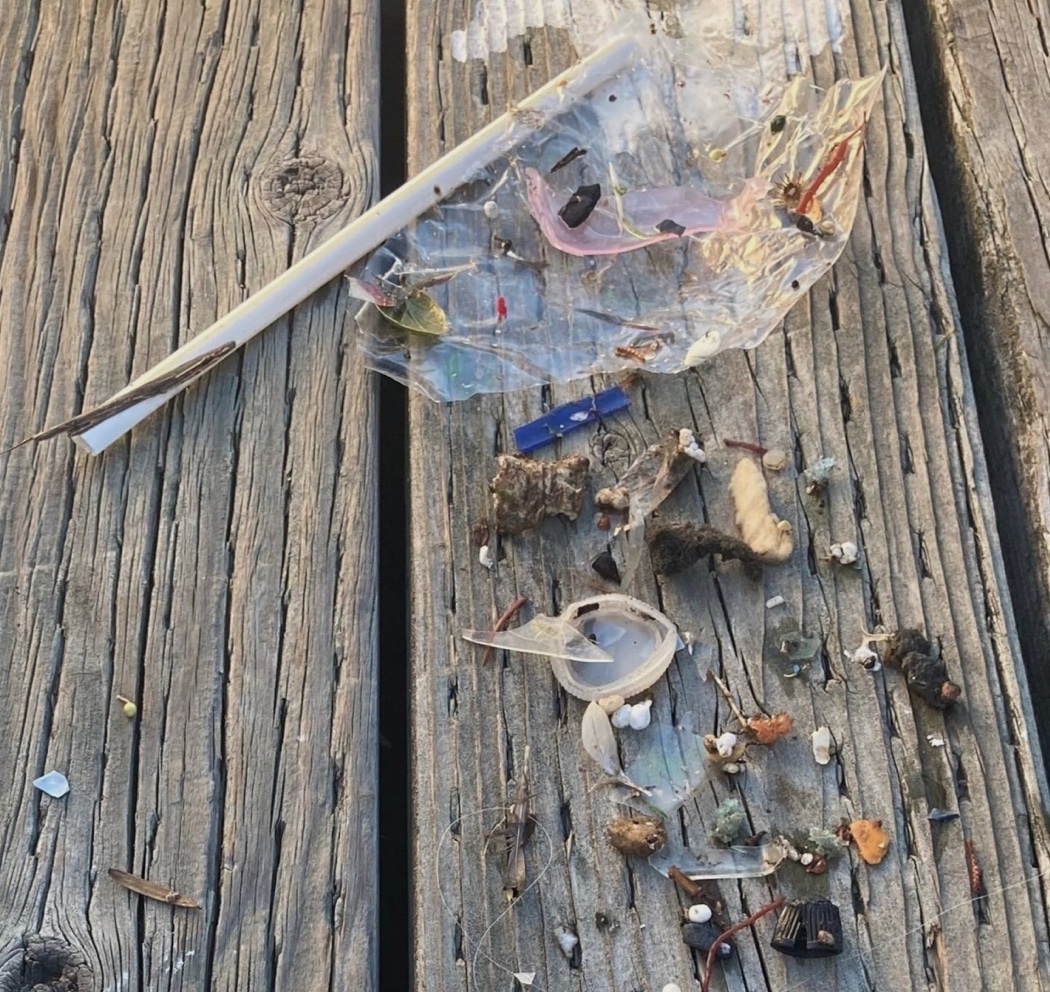
With his dad being a sailor, Scott grew up around boats and would spend a lot of time sailing dinghies, as well as embarking on a few ocean voyages. These days he sails his own Catalina 27, Evening Star, which he has commissioned to help him collect the trash. “I was struck by how much debris and trash existed right in the Bay and Alameda Estuary, so I began to pull trash from the waterways using just a net. Simultaneously, I had learned about a DIY microplastics trawler called LADI [Low-tech Aquatic Debris Instrument, pronounced “lady”], which I built and began to drag behind my boat.”
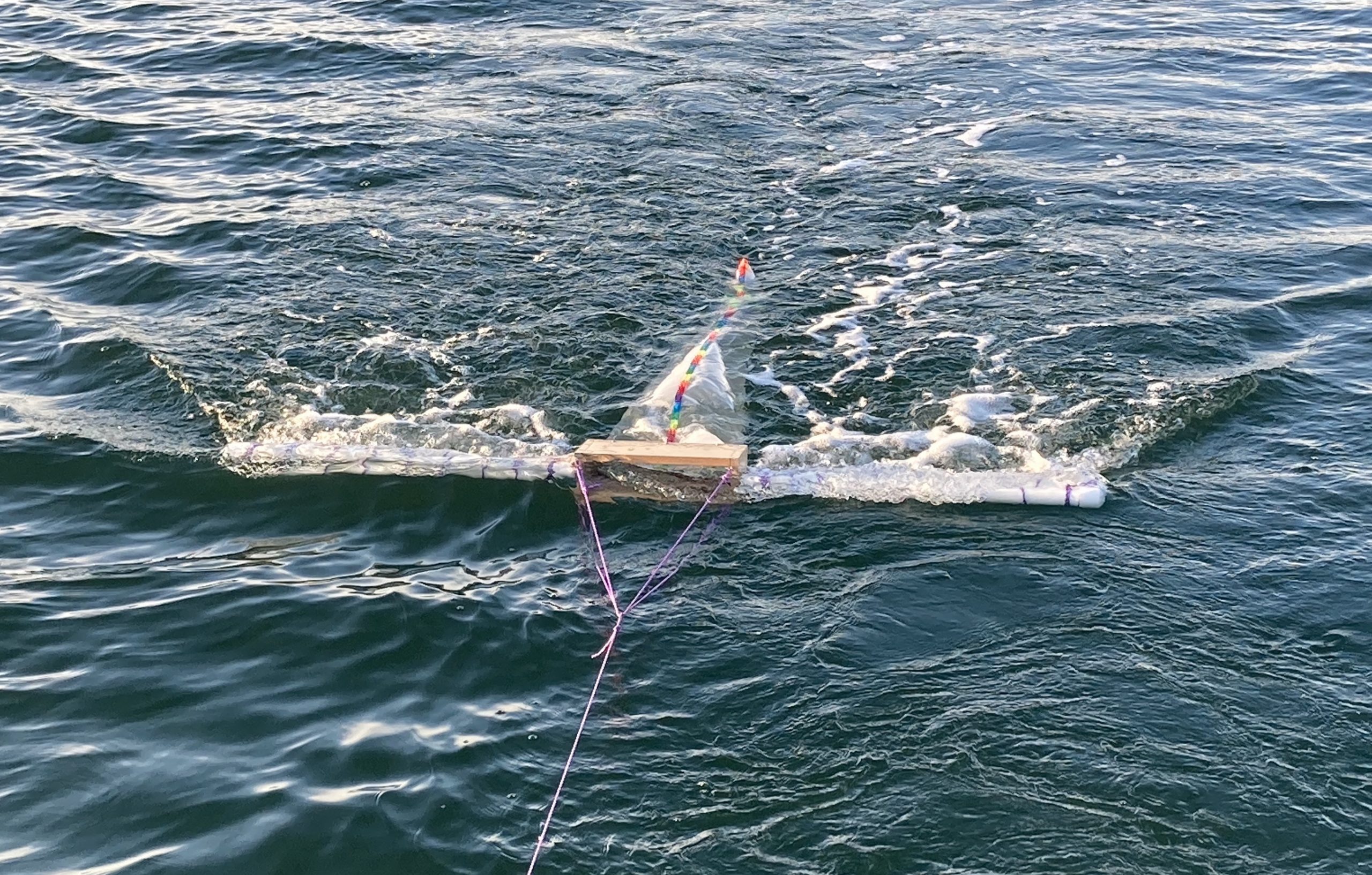
“I had been collecting trash on my own during the end of 2020, but this project officially began in the beginning of 2021,” Scott said.
“Every time I was out either collecting with a net or dragging the trawler, other sailors would comment, ask questions, and show interest in what I was doing. Due to the enthusiasm displayed by others, I began to conceive of a grander goal/project, finally landing on the ‘1 ton in 2021.'”
What began as a solo effort to clean up the Bay has now grown into a larger-scale project with an official name and a website — Trash Boats: 1 Ton in 2021. “I think it’s funny to say and it also describes the mission pretty clearly.”
After a collection run, Scott weighs his catch with a digital hanging scale and takes it to the marina dumpsters, where he separates the recyclables. “I’ve collected about 200 pounds so far, but am looking forward to more group efforts once things open up a bit more.”
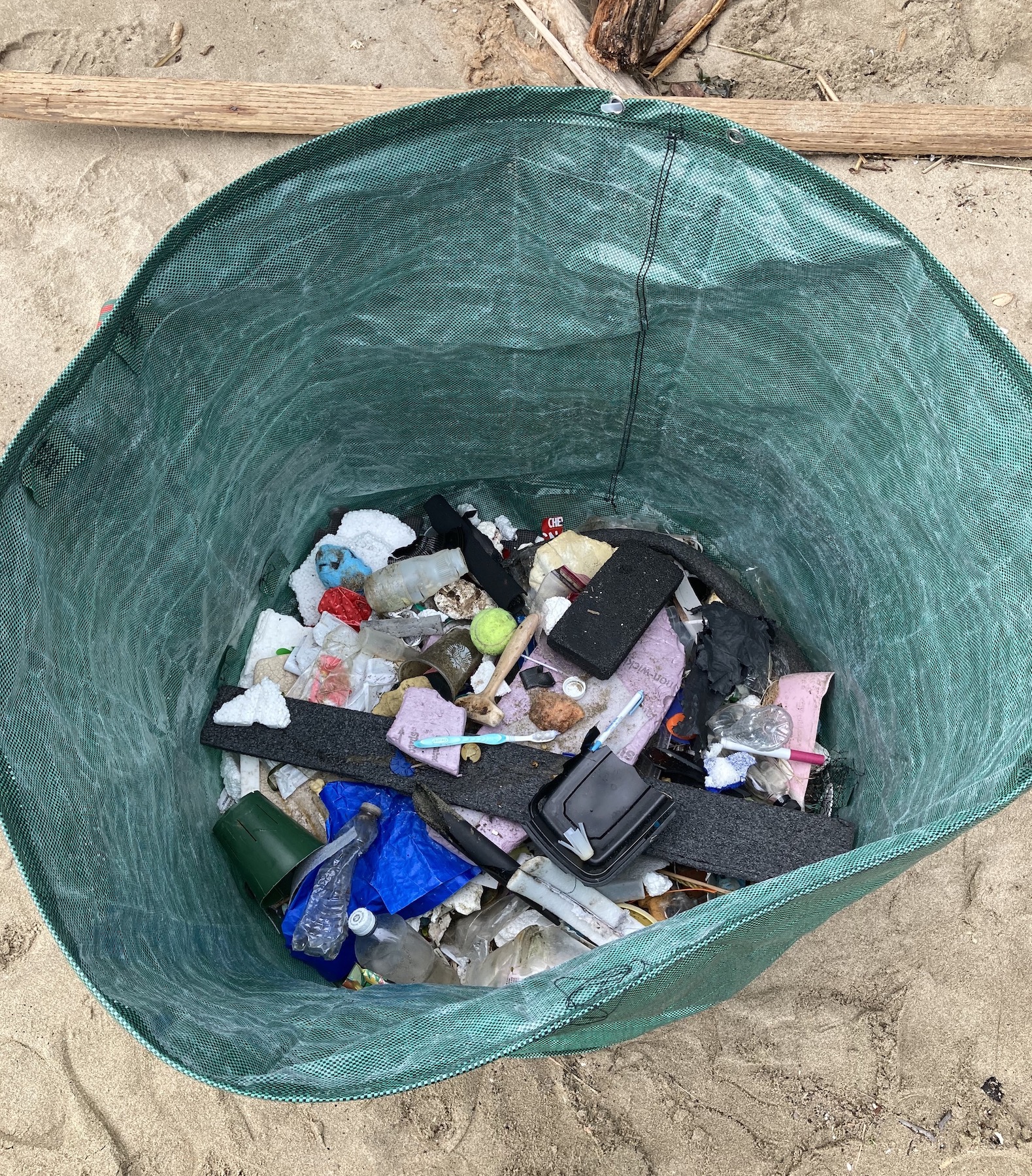
Right now ‘Trash Boats: 1 Ton in 2021’ doesn’t have any official sponsorship, but Scott is hoping to gain the support of local marinas, yacht clubs and other organizations in the future. When you consider the effect microplastics are believed to have on our oceans, and ultimately all living creatures (us included), it stands to reason that Scott’s mission is one we could all get behind.
If you want to help out, head over to Trash Boats: 1 Ton in 2021, or show your support by contributing funds at the project’s GoFundMe page.
Incidentally, Encinal Yacht Club is holding their third annual Earth Day Estuary Clean-Up Day this Saturday, which means it’s on tomorrow!
Skippers Wanted: US Coast Guard-Licensed Captains for Charters and Private Lessons
Wanted: US Coast Guard-licensed captains for charters and private lessons. For power & sail. Hourly rate from $50 up. Weekend and weekday work available.
1160 Brickyard Cove Road, Suite 21, Richmond, California 94801 • (510) 236-2633 • [email protected]
Winging It, and Wondering What to Call this New Watersport
Bay Area legend Chip Wasson recently penned an article for Bay Watch, a newsletter for local kiting, about the latest trend in watersports. The sport is so new and novel, we’re not even sure what to call it yet. Have you tried “winging,” foiling, SUPing, or other new(ish) watersports? Do you get excited when a new trend hits the water? Please comment below.
Around the Bay Area, and increasingly around the world, you may have seen an unfamiliar little wing scooting across the water, held by a rider atop a hydrofoil. Just as most people have made the transition from the windsurfer to the kiteboard, there is a new thing buzzing around the waters, colloquially called the Wing Ding by those in the know. The wing arrived about two years ago, and has really taken off over the past year — reports say wings are outselling kites 30:1 in Maui. Just take a look at Crissy Field: These gnats infest the Bay, whereas only two years ago you would have seen primarily kites and some remaining windsurfers smattered into the mix. So, here is the question we are trying to answer: “Why is the Wing Ding getting so Ding popular?”
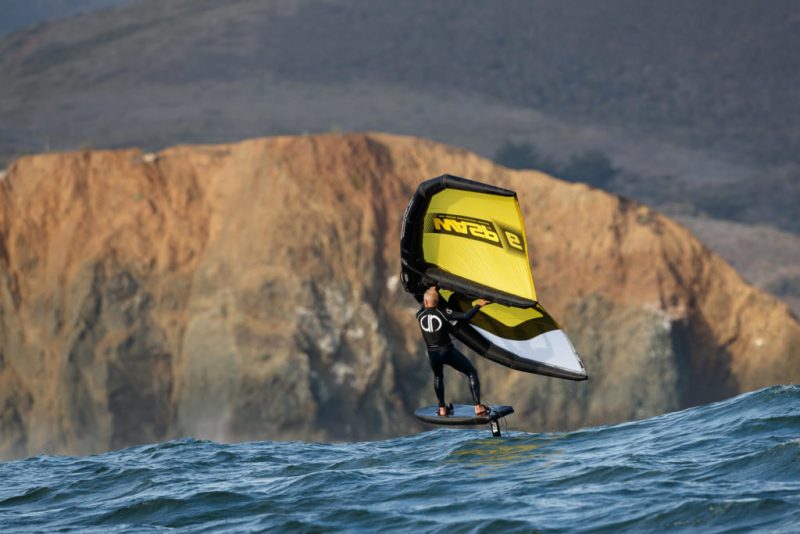
The Wing Ding Offers Broad Accessibility
Anyone can lift a wing into the air and catch the passing breeze. If the breeze is too strong, or they are uncomfortable with the power, they can simply hold on to the front of the wing with one hand and let the wind pass by. Once the kite is in the air, it is game-on in terms of focus, concentration and power — until the kite is safely landed. For many, there is something nerve-racking about having a kite in the air constantly offering pull, power and the potential for catastrophe. With the Wing Ding, all of this anxiety flies away. This allows broad accessibility to those who might not be up for such an adrenaline-inducing experience as the kite. If one does not like what is happening with the Wing Ding session, they can simply lie down on their board and paddle to safety. Very comforting indeed!
The Wing Ding Offers Simplicity of Equipment
Much of the beauty of surfing is that all you need is a board and a leash. There is a certain freedom in that simplicity. In terms of equipment, the Wing Ding is not quite as free as surfing, but it is closer to freedom than the kite or the windsurfer. The windsurfer becomes an unwieldy, large piece of equipment once the sail is attached to the board. The kite is unwieldy because of lines, bars, tangles, danger, unpredictability, injury, potential death, etc. The Wing Ding is two detached pieces of equipment that can be put to rest at any desired moment. This is comforting to the masses and promotes participation.
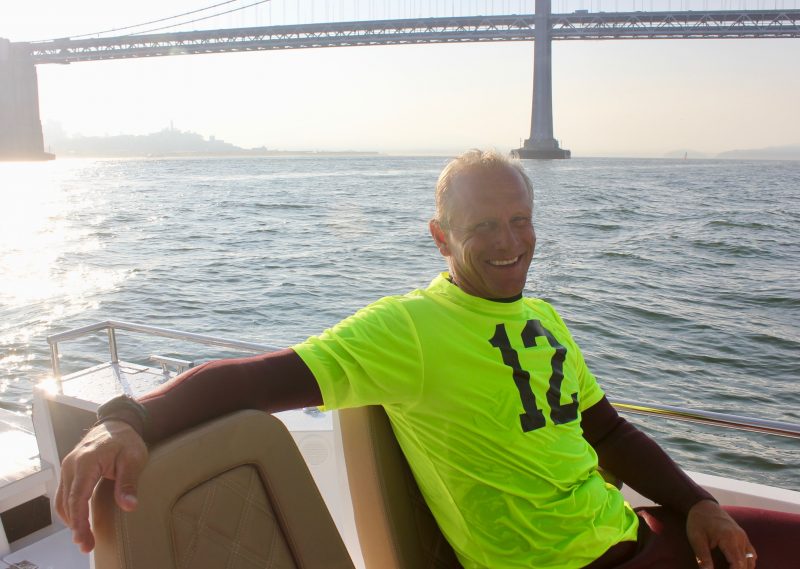
Wing Dinging Seized an Opportunity to Grow Locally
In the Bay Area, there is a robust fleet of people racing on foils and kites, as well as windsurfers. In 2020, when COVID hit, racing was canceled, and what could be considered “The Crissy Field Effect” kicked in. The local kite-racing fleet seized the opportunity to shift their focus from speed on the race course to learning something new and dynamic. Windsurfers also started to switch over, as the wing is very similar in sensation to the windsurfer, and Lord knows those windsurfers were ready for something new. Crissy was so conducive to this sport as there was a focused wind and water population primed to try it. Crissy also has great setups with waves, swell and ship wakes to play and innovate on. Once the kite and windsurfing groups started to participate, the rest of the water world started to take notice, and new participants started to fall into line.
The Wing Ding Offers Ease of Launching
One needs ample, safe space to organize lines and launch a kite, and in most situations, riders need help from another person to launch and land the kite. The Wing Ding can be safely put into the water from anywhere. A boat and a rocky shoreline are perfect places to slip into the water, safely paddle for a bit, and sail away.
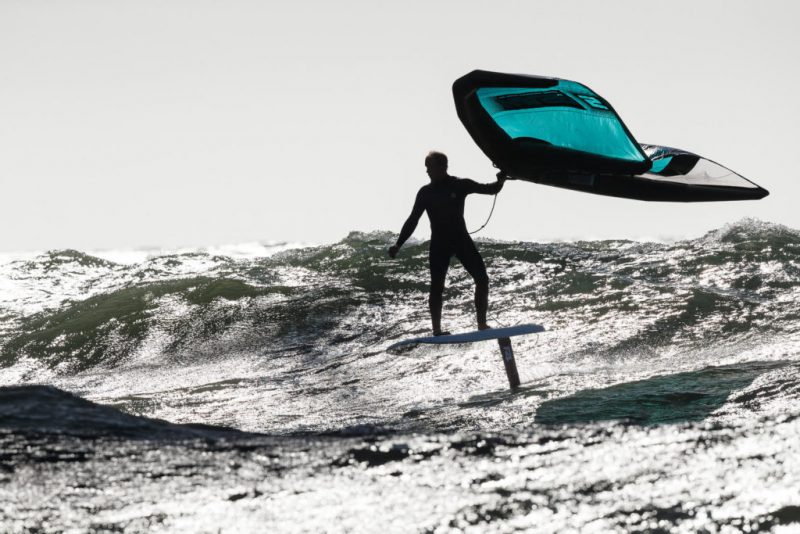
The Wing Ding Offers Access to the Sensation of Flight
Everyone wants to fly, right? The Wing Ding offers a safe way. This foil flight can come in many different forms: One can ride a larger, slower, fatter foil and be able to foil up in very little wind with a larger board. One can also ride a smaller, faster foil and board that require more wind and speed. There is an entire world in between these ends of the spectrum that offer up different kinds of riding, be it waves, flat water, wakes of ships, light wind, heavy wind, etc.
The Wing Ding Offers Something Novel
I find that people who are interested in contemporary motion sports like windsurfing, SUP, or kiting are interested in what is new and emerging. The Wing Ding gives those who have been in the wind and water world for a long time something new to sink their teeth into. I love to learn something new and enjoy the trajectory of being a rank beginner at something, then travel through the process of becoming proficient at something dynamic and new.
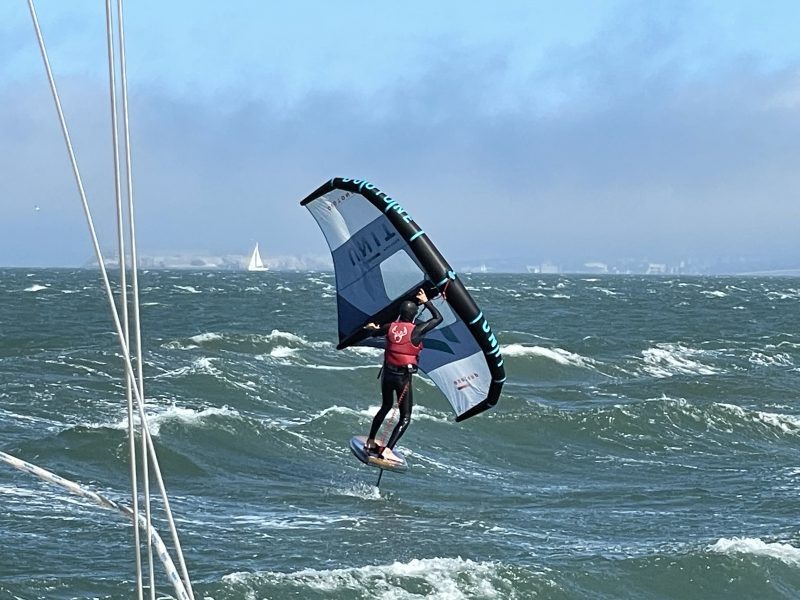
The Wing Ding Offers a Sense of Addiction
The Wing Ding is definitely addicting for all of the great things that it embodies. However, it is this writer’s opinion that the Wing Ding is simply another tool to have in the shed, another skill to have for any appropriate situation. Many people are swept away with the Wing Ding and profess that they are selling all of their kitesurfing or windsurfing gear and only Wing Dinging from here on out. I urge these people not to be so myopic in their pursuits. The Wing Ding is just another thing, albeit a great thing that’s experiencing a surge in participation and enjoyment. We must keep in mind that every passion has its bell curve, and we must maintain our arsenal of skills to use at any appropriate given circumstance. Let’s not lose sight of all of the fun, fulfilling things that life has to offer!
Morro Bay: Mid-Coast Relief or Destination?
We were sorry we couldn’t stay. On our recent trip north we pulled into Morro Bay in the early morning to get fuel. We entered at 5:30 a.m. in perfect calm, with a full moon easing the visibility in the already well-marked channel. While it’s a well-protected harbor of refuge for boats traveling north or south, it’s also a worthy destination on its own. When we mentioned our quick stop in a recent ‘Lectronic Latitude we received several notes from coastal cruisers suggesting we should have stayed to visit. Fortunately, or unfortunately, we had a good weather window to carry on, so we did.
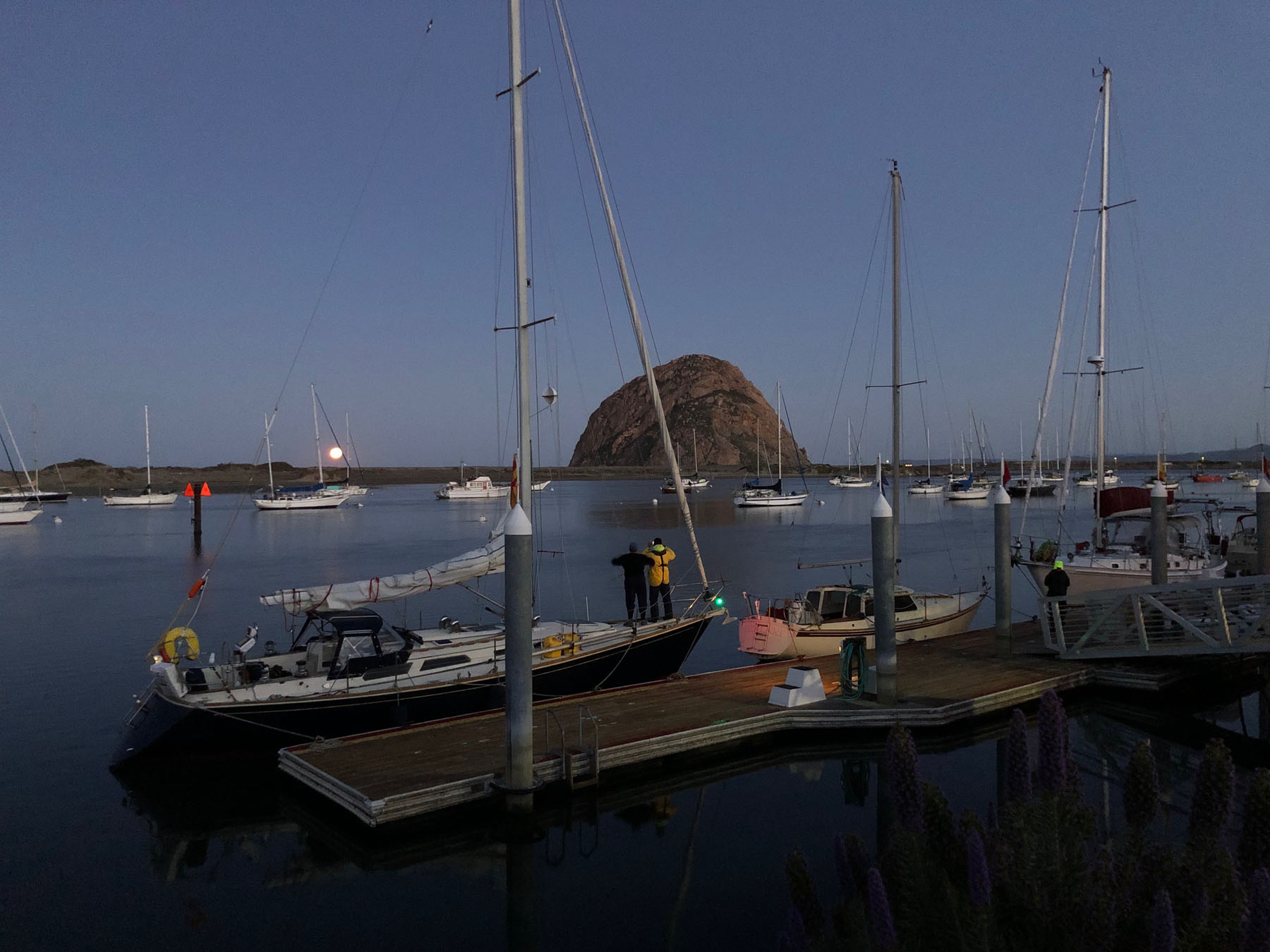
The entrance to Morro Bay is dominated by Morro Rock, which, according to Wikipedia, is a 23-million-year-old, 571-ft-tall remnant of a volcano called a volcanic plug.
Of course, all was quiet at the Morro Bay Yacht Club at 6 a.m., but we were able to rest for an hour and walk down the quiet streets to check out DeGarimore Fuel, adjacent to Giovanni’s Fish Market and some hard-shouldered, fixed pilings. We fueled up a little before 8 a.m. and were on our way. Next time we hope to spend some time checking out the yacht club and the rest of this harbor town.
What are your favorite reasons to visit Morro Bay?
Nothing Lasts Forever
“We sailed from Mazatlán to La Cruz on January 1,” say Marvin and Ruth Stark of the Nautitech 44 catamaran Microbe. “The overnight sail was spectacular — full moon with only the gennaker pulling us along in 6 – 8 knots of wind.”
Microbe is the fourth multihull Ruth and Marvin have cruised aboard in the last 25 years, starting with the F-31 Noor, aboard which they did the third Baja Ha-Ha in 1997. (Actually, Marvin and two other guys did the rally. Ruth flew down when they got there and told him if they were really going cruising, he needed a bigger boat.)
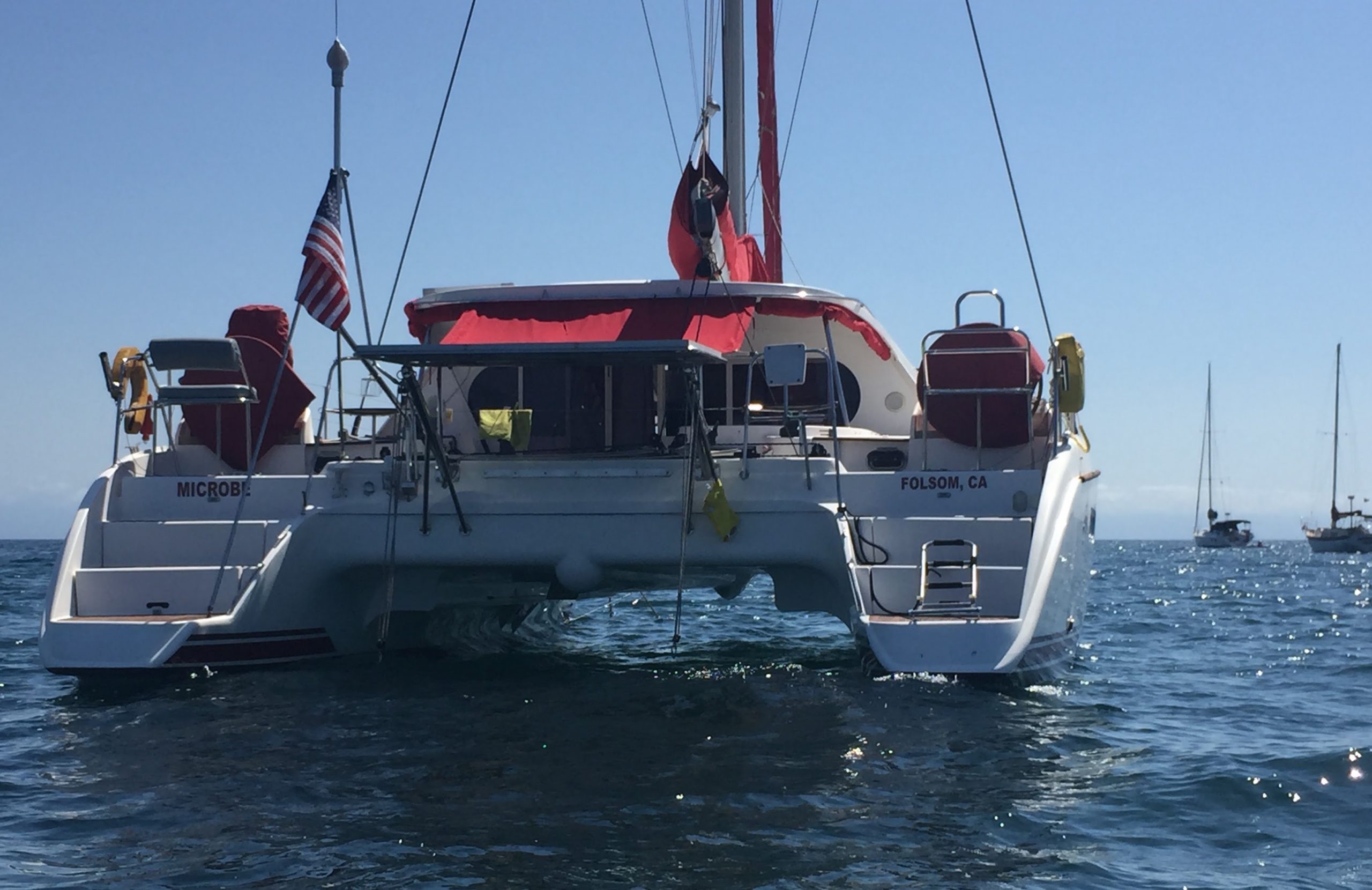
Most years, the stops in Mexico would have been brief as this long-ranging cruising couple made their way over many a far horizon. This year, they were content to hang around Banderas Bay and do daysails with friends and family, partially because of pandemic restrictions and partially because Marvin may finally be slowing down a bit.
“I am 84 years old this year, same age as the Golden Gate Bridge — built in 1937,” he noted recently.
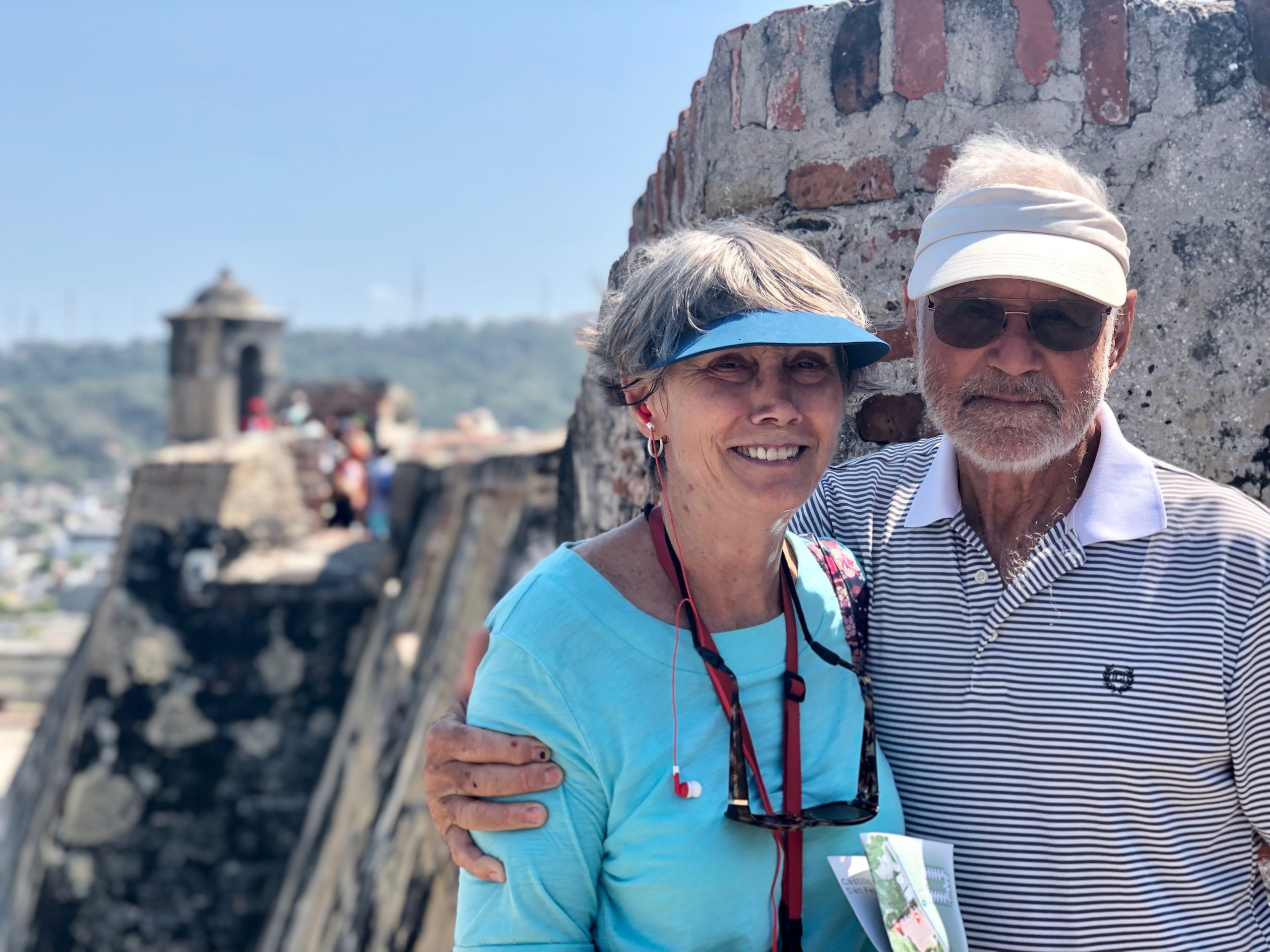
Ruth and Marvin had a brush of sorts with mortality when they were looking for a new place to have dinner one night and came across Ana Banana. In the outside dining area, which opens up to the jungle in back, was a pole with dozens of those little purple Crown Royal drawstring pouches hanging from it. They struck up a conversation with the 86-year-old owner, Barry, and soon found out that each of the 47 Crown Royal pouches contained the ashes of its deceased owner.
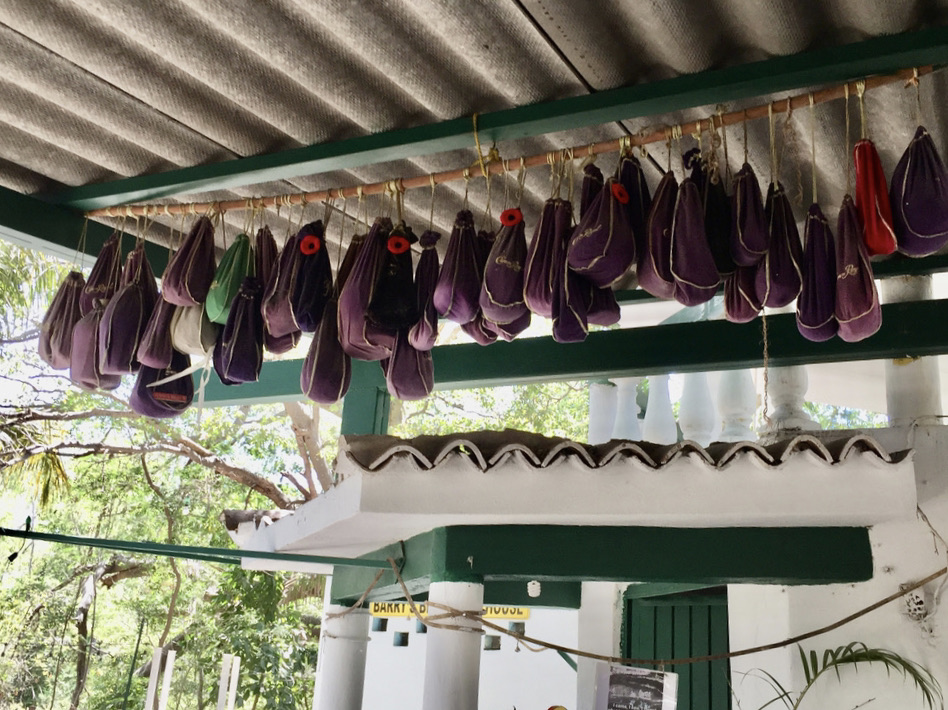
“Barry is quite musically inclined, and has written a great, philosophical song about dying that he sings as part of a memorial service only when another Crown Royal bag is added to the pole. Without a backup band (they weren’t there that night) he would only recite the song, but it was very touching.”
To the tune of Knockin’ On Heaven’s Door …
Nothing lasts forever,
We know it’s gotta be true,
We’re all getting a little older,
You know that makes me blue.
I know I’m gonna die one day,
I just hope to hell that it won’t be soon
Because I still feel like an old tomcat
Howling at the moon.
When I go, I have a wish
That I want you to keep:
Don’t throw me in some dirty dark hole,
Darkness gives me the creeps.
Put my remains in a Crown Royal bag
And hang me over there,
Just above my old bar stool
Where my friends are near. . .
Don’t send me no flowers,
Don’t shed me no tears,
I don’t wanna lie in a coffin
Looking gray and queer
(and still smelling like smoke and whiskey).
You know, when my time comes,
That would be a good way to go,
Just hanging around in a Crown Royal bag.
I don’t have to tip no waitress,
Don’t have to answer no phone
And I don’t have to stagger my way home.
“I certainly agree with many of Barry’s sentiments,” notes Marvin.
“We have decided to keep our boat another year and hopefully will be listening to more music at Ana Banana’s next season. In the meantime, it’s time to put the sail up and head back to Mazatlán and stash the boat for the coming summer season. Then home to plant the garden and enjoy the summer. If we had any more fun, we couldn’t handle it!”

